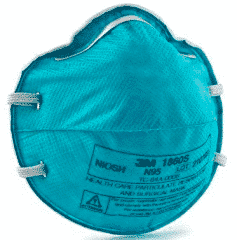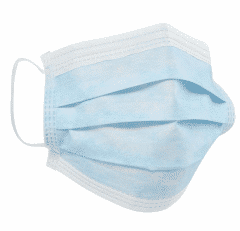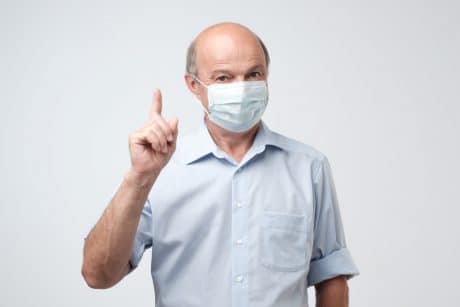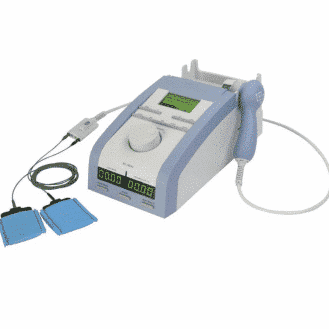
3M N95 respirator
A respirator is a type of personal protective equipment. It prevents the wearer from inhaling aerosols (dust, smoke, mist) as well as vapors or gases (disinfectants, anesthetic gases) that are health hazards. It also protects the wearer from airborne infectious agents i.e. against contamination by a virus such as coronavirus, SARS, H1N1, etc.
Respirators are divided into two categories: insulating (which are not covered in this buying guide) and filtering.
Filtering respirators consist of a facepiece and a filtering device. Sometimes the filter element is integrated into the facepiece. Depending on the type of filter, the mask will either be effective only against particles, only against certain gases and vapors, or against particles, gases and vapors.
Filtering respirators can sometimes also be equipped with an exhalation valve to improve user comfort. The valve prevents condensation inside the mask, misting on the glasses and helps the user breathe in and out easily.
It should be noted that respirators also protect those who wear them from inhaling “droplets” of infectious agents.


 Several criteria should be taken into account when choosing a mask such as application, type of mask, level of protection required, etc.
Several criteria should be taken into account when choosing a mask such as application, type of mask, level of protection required, etc.

 In the presence of patients with contagious diseases or dangerous viruses, caregivers must be equipped with a suitable type of mask with a sufficient level of protection. Let’s take the cases of tuberculosis, coronavirus, SARS, H1N1 and the risks of bioterrorism.
In the presence of patients with contagious diseases or dangerous viruses, caregivers must be equipped with a suitable type of mask with a sufficient level of protection. Let’s take the cases of tuberculosis, coronavirus, SARS, H1N1 and the risks of bioterrorism.






Clear and comprehensive. The appropriate protection should be chosen in the knowledge that it does not completely eliminate the risk but appreciably reduces its probability.
한국관광서포터즈 대표이사 박형빈 입니다
많은자료 가 도움이되었읍니다
감사합니다
I found this site to be very informative and straight to the point. Explained everything i wanted to know very clearly .
This info is very useful, Thanks.
First time reading & knowing mask details and found here very useful informations.
Thank you! Finally, clear and concise information on masks and what level of protection they provide and their proper and intended use.
Thank you – very informative and should be sent to everyone by Government agencies
It’s great that you put out some key pointers related to surgical masks and respirators. There are many who are still confused about which one to use when and what the right way is to wear a mask, with respect to a surgical mask, respirator mask like N95 or KN95 mask. People shouldn’t just have the product, but they should have the right product and knowledge of how to use it rightly.
Nice article keep it up like this in your future.I hope you do best afford and make future bright.
thank u so much its clearly explained and easy to understand
The article was soo informative towards the usage of surgical or FFRs .
On the other side it’s required to provide a proper information regarding the usage of non medical mask too.Because if we go thru the percentage of usage of surgical,FFRs and non medical masks. Non medical stands by the major side and it’s required to choose the best from the worst scenario.
Thanks for the detailed explanation and video. It is a very useful piece of content. I really appreciate your efforts in creating great content like this.